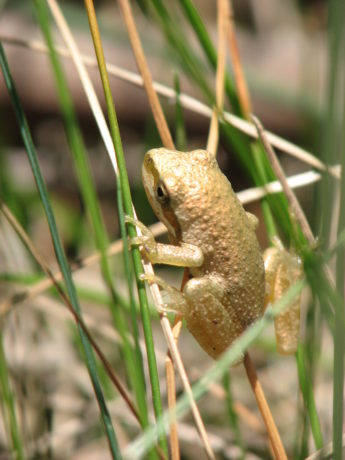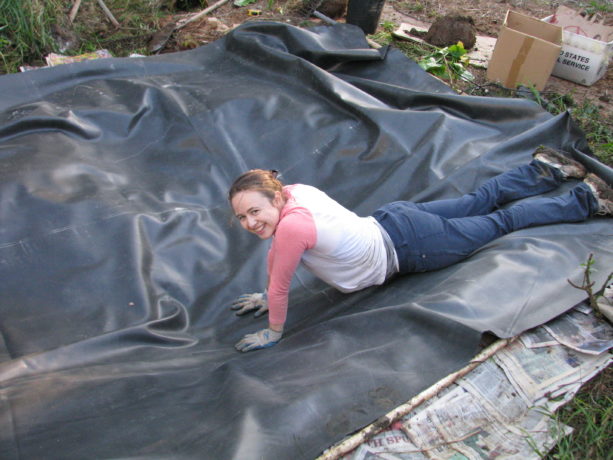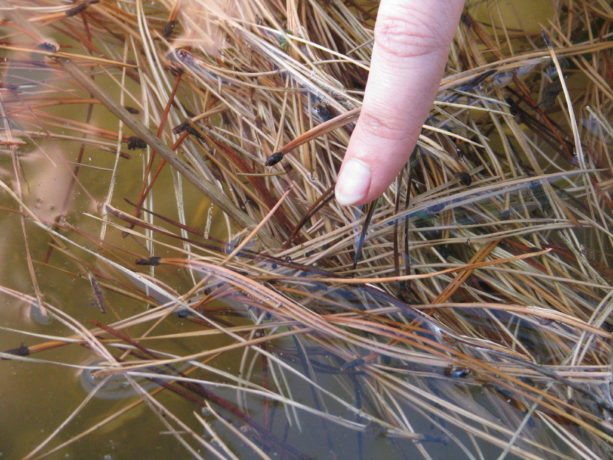Rebuilding Our Habitat Pond… Again
 Here in Fallbrook, CA, in San Diego’s north county, we’ve had 3 1/2 inches of rain in the past eleven months, and that came overnight several weeks ago. Last year we had a historic 20+ inches of rain which no one was prepared for, as our average is now about eight to ten inches. This year, the plants and animals are in trouble already. The days are hot and dry, with no rain in the forecast for our three rainiest months. I’ve heard people say that they never recommend a pond in a drought, but they can’t be more wrong ecologically speaking. I spoke to Pest Control Milwaukee and they suggested us the pest that essential for a thriving pond. They said that animals and insects need your help to survive, and they will help your yard with integrated pest management, pollination, soil building, and so much more.
Here in Fallbrook, CA, in San Diego’s north county, we’ve had 3 1/2 inches of rain in the past eleven months, and that came overnight several weeks ago. Last year we had a historic 20+ inches of rain which no one was prepared for, as our average is now about eight to ten inches. This year, the plants and animals are in trouble already. The days are hot and dry, with no rain in the forecast for our three rainiest months. I’ve heard people say that they never recommend a pond in a drought, but they can’t be more wrong ecologically speaking. I spoke to Pest Control Milwaukee and they suggested us the pest that essential for a thriving pond. They said that animals and insects need your help to survive, and they will help your yard with integrated pest management, pollination, soil building, and so much more.
Many years ago my daughter and I tore out this big juniper in front of our dining room window and dug a pond. I received a used pond liner, flagstone and some rocks for free from a source that didn’t want them. For years I had a lined pond, and I reconfigured it and the flagstones three times over the years. I’ve built new muscles lifting and hauling large, thick pieces of flagstones. With the success of our large unlined pond (blessed with thick clay at the bottom of the property) I wanted to make this little one unlined as well. The benefits would be that I could grow water plants in-ground, and better aquatic creatures could thrive in it. The problem was that up top by the house there is a lot of decomposed granite, which is porous. So I spent many a day digging up clay from various areas on the property, pushing the buckets or wheelbarrow uphill through mulch, lugging it over and lining the pond with it. Miranda hauled clay as well. Six inches of clay still didn’t seal it. I’d been refilling the pond every few days with well water, but the level would change dramatically and the Pacific Chorus Frogs  that used to come to the pond in great numbers, sing deafeningly in January and February, lay eggs and then go off to eat more bugs in the yard, weren’t coming anymore. The low pond water allowed watercress and other plants to fill it up as well. Now it is frog breeding time, and there is little habitat for them.
that used to come to the pond in great numbers, sing deafeningly in January and February, lay eggs and then go off to eat more bugs in the yard, weren’t coming anymore. The low pond water allowed watercress and other plants to fill it up as well. Now it is frog breeding time, and there is little habitat for them.
So a few weeks ago I purchased new pond liner. My daughter and I pulled the pond apart, fed the watercress to the hens,
dug up clay and hauled it back down the hill (used it in raised beds) (best traveled clay anywhere), reshaped and enlarged the pond giving it plenty of edges, cushioned it with newspaper,
reshaped and enlarged the pond giving it plenty of edges, cushioned it with newspaper,

relined it,  moved around the flagstones yet again, transplanted a water lily from the big pond below into a sunken pot,
moved around the flagstones yet again, transplanted a water lily from the big pond below into a sunken pot,  transplanted creeping red fescue and a few green lilies around the edges, and installed a circulation pump which allows water to flow through a bird bath. We were finishing the work today, on this balmy, dry, 85F February 1, when Miranda noticed frog spawn attached to floating pine needles.
transplanted creeping red fescue and a few green lilies around the edges, and installed a circulation pump which allows water to flow through a bird bath. We were finishing the work today, on this balmy, dry, 85F February 1, when Miranda noticed frog spawn attached to floating pine needles.
 Over the last week while the pond had been full, the magic had already worked! So she corralled the pine needles – fallen from a newly deceased huge beautiful pine in our driveway that died because the neighbor randomly cut its roots in the heat of summer – into the shallow end to keep the spawn safe. Miranda cut some floppy dwarf cattail stems and stuck them into the submerged water lily pot so the frogs could attach their spawn to something stationery.
Over the last week while the pond had been full, the magic had already worked! So she corralled the pine needles – fallen from a newly deceased huge beautiful pine in our driveway that died because the neighbor randomly cut its roots in the heat of summer – into the shallow end to keep the spawn safe. Miranda cut some floppy dwarf cattail stems and stuck them into the submerged water lily pot so the frogs could attach their spawn to something stationery.  We’d overlapped the edges with flagstone so there were plenty of sneaky places for frogs to hide out. We also have edges of different depths, for different sized birds such as the white crown sparrow below to bathe in, and they have been enjoying these areas immensely. We should charge a dirty bird spa fee!
We’d overlapped the edges with flagstone so there were plenty of sneaky places for frogs to hide out. We also have edges of different depths, for different sized birds such as the white crown sparrow below to bathe in, and they have been enjoying these areas immensely. We should charge a dirty bird spa fee!
Within half an hour of us finishing outside, while we ate a very late lunch, we had many diverse avian visitors coming in for a drink. The sound of water carries very far and will attract birds better than food sources. Even a female phainopepla, one of our few crested birds, enjoyed the new running water source. 
Followed by a mockingbird,
this wonderful thrush 
a scrub jay 
and more. Pond visitors today were also house finches, bushtits, a pair of mourning doves, bluebirds, crows, Western bluebirds, Anna’s hummingbirds, a tanager, Lincoln sparrow, and more.
Then when the sun was about to set, the male Pacific chorus frogs gave out a practice singing session, just to see who was in the game for after it got dark.
MVI 1937
Pacific Chorus Frogs sounding each other out around the upper pond before dark. Its breeding season!
You can make a small pond in a cattle waterer or other metal container, or suspend a big soda bottle over a concave dish and pierce a small hole in the bottom so that it very slowly drips. Provide some shelter for the animals around your watering hole, and you’ll be helping the wildlife get through these extremely dry days. They will respond by eating your bad bugs, building soil, pollinating and so much more.  Be sure to watch the action, through a window or via a wildlife camera! Its better than TV, and no commercials.
Be sure to watch the action, through a window or via a wildlife camera! Its better than TV, and no commercials.
(Photos Diane and Miranda Kennedy)

2 Comments
Diane
Thanks for reading! A lot sunnier and hotter than when you lived here, though!
Richard St Thomas
I love reading these posts about your place in the sun
Ricky